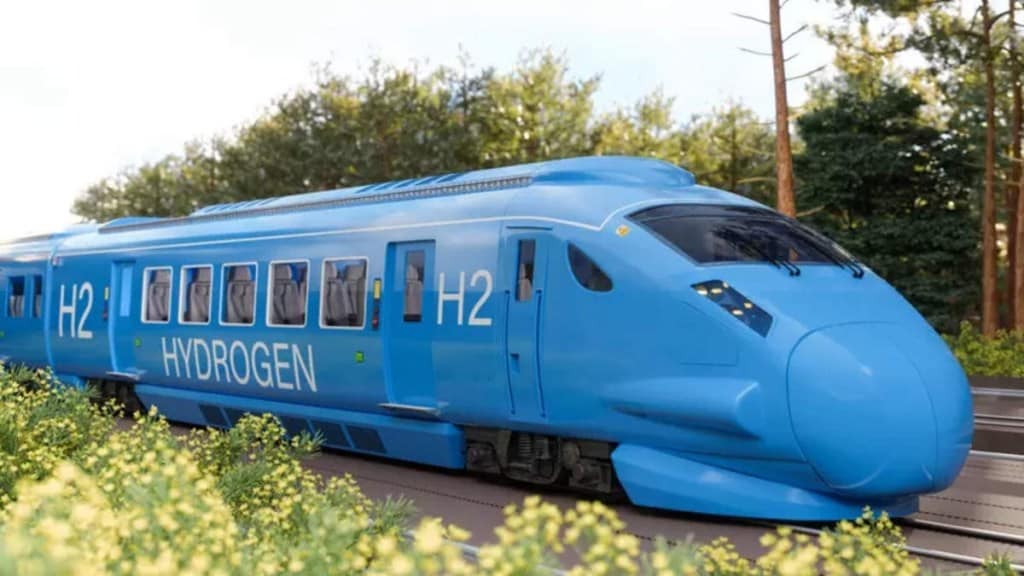India is set to launch its first hydrogen-powered train in December 2024, marking a significant leap toward sustainable transportation. This eco-friendly innovation operates without diesel or electricity, reinforcing Indian Railways’ ambitious goal of becoming a “net zero carbon emitter” by 2030.
Powered by hydrogen fuel cells, the train uses water as its primary resource for energy generation. By combining hydrogen and oxygen, the fuel cells produce electricity for propulsion, emitting only steam and water as byproducts. With zero harmful emissions, this groundbreaking train sets a new benchmark for environmentally conscious rail travel in India.
Why Hydrogen?
The hydrogen train is part of Indian Railways’ ambitious plan to cut down its carbon footprint and eliminate air pollution caused by diesel engines. Using hydrogen fuel cells enables the train to avoid emitting carbon dioxide, nitrogen oxides, and particulate matter, making it one of the most sustainable forms of transportation available.
In addition to being eco-friendly, hydrogen-powered trains produce 60 per cent less noise than diesel-powered engines. With plans to roll out 35 hydrogen trains nationwide, Indian Railways is gearing up for a cleaner, quieter future.
Route and Speed Details
The hydrogen train’s trial run will take place on the Jind-Sonipat route in Haryana, covering a distance of 90 kilometres. Additional routes under consideration include heritage mountain railways such as the Darjeeling Himalayan Railway, Nilgiri Mountain Railway, Kalka-Shimla Railway, and others across scenic and remote regions of India.
The train is expected to achieve a maximum speed of 140 km/h, offering a swift, sustainable, and comfortable journey for passengers. Each hydrogen fuel tank will allow the train to travel up to 1,000 kilometres before refuelling, making it suitable for longer routes in the future.
The Science Behind Hydrogen Trains
In this train, hydrogen fuel cells convert hydrogen gas into electricity through a chemical reaction with oxygen. The electricity powers the train’s motors, while the only byproducts of the reaction are water and steam. Each hour, the train will require approximately 40,000 litres of water for the necessary chemical processes. Dedicated water storage facilities will be constructed to support the operation of these trains.
Investment and Infrastructure
The development of each hydrogen train comes at an estimated cost of Rs 80 crore. Extensive infrastructure updates, such as hydrogen storage facilities and dedicated refuelling stations, are underway to support the train’s operation. With the success of initial tests and approvals of the hydrogen fuel cells and plants, Indian Railways is optimistic about meeting its 2030 net-zero target with these advancements.
Plans for Nationwide Expansion
Following the trial runs, Indian Railways plans to expand its hydrogen train services to other parts of the country, with 35 hydrogen trains expected to run across various routes by 2025. These trains will offer comparable speed and passenger capacity to traditional diesel trains, providing an eco-friendly alternative without sacrificing efficiency.
Future Outlook for Green Railways
The launch of India’s hydrogen train marks a pioneering step in sustainable rail transport, helping Indian Railways advance toward its ambitious climate goals. With zero emissions, reduced noise, and high speed, this hydrogen train is expected to reshape the future of rail travel in India.


